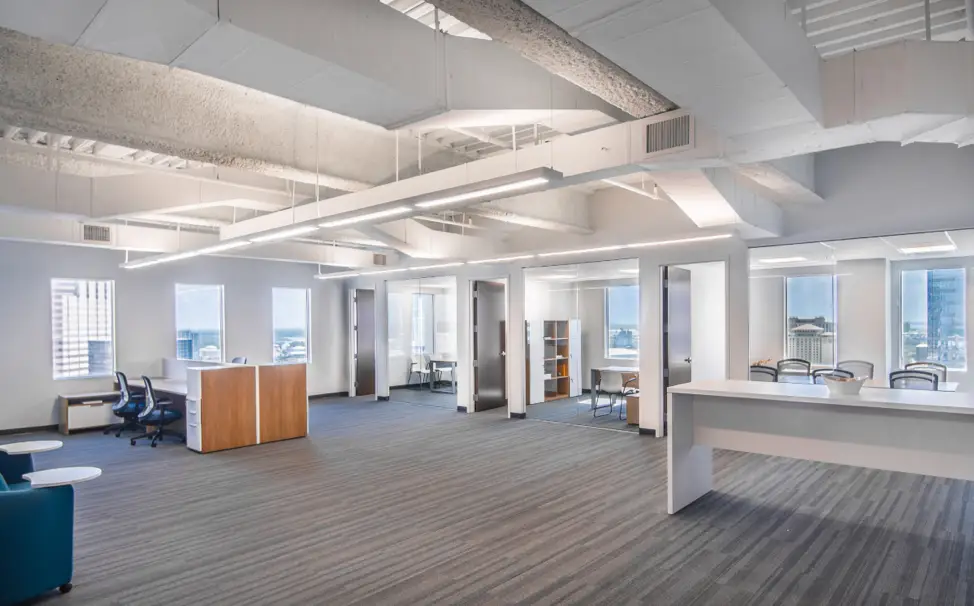
Maximizing Small Spaces: Clever Design Tricks for Urban Apartments
Embracing the Compact: Smart Design for Urban Living
Urban living increasingly presents a unique challenge: how to cultivate a comfortable, functional, and aesthetically pleasing home within shrinking square footage. As city populations grow and available space becomes a premium, residents often find themselves in apartments that demand creative solutions to maximize every inch. This reality transforms what might seem like a limitation into an exciting opportunity for innovative design.
The perception that small spaces inherently mean sacrificing style or personal comfort is rapidly changing. Modern design philosophy, championed by firms like FutureForgeStudio, emphasizes that intelligent planning and strategic choices can unlock the full potential of any compact dwelling. It's about working smarter, not harder, to create environments that feel expansive and inviting, regardless of their actual dimensions.
Embracing the constraints of a small apartment encourages a mindful approach to interior design. Every piece of furniture, every decorative item, and every organizational system must serve a purpose, often multiple purposes. This deliberate selection process not only enhances functionality but also contributes to a cleaner, less cluttered aesthetic, which is crucial for maintaining a sense of openness.
The significance of this topic extends beyond mere aesthetics; it touches upon quality of life. A well-designed small space can reduce stress, improve organization, and foster a greater sense of peace and productivity. It empowers residents to live fully without feeling confined, proving that a compact footprint doesn't have to equate to a cramped lifestyle.
In this article, we will delve into clever design tricks and expert insights specifically tailored for urban apartments. From ingenious storage solutions to visual illusions that expand perception, we aim to provide actionable strategies that transform modest areas into extraordinary homes. Prepare to discover how thoughtful design can redefine your living experience.
Practical Applications of Small Space Design
-
Studio Apartments: Essential for single-room living, these techniques allow for distinct zones for sleeping, working, and relaxing without physical barriers. Multi-functional furniture and vertical storage are paramount, turning limitations into features.
-
Tiny Homes & Micro-Units: Crucial for optimizing extremely limited square footage, ensuring every element serves a vital role. Smart design integrates storage and utilities seamlessly, making these homes highly efficient and livable.
-
Guest Rooms/Home Offices: Transformable spaces benefit immensely from these principles, enabling a single room to fluidly shift between functions. Fold-down desks, sofa beds, and modular shelving provide unmatched versatility.
Expert Perspectives on Maximizing Space
Leading designers consistently emphasize the untapped potential of vertical space. "Too often, people only consider the floor plan," notes Anya Sharma, a renowned interior architect. "However, walls and ceilings offer incredible opportunities for custom shelving, built-in storage, and even elevated sleeping platforms. Utilizing these dimensions can effectively double your usable area without expanding your physical footprint." This approach requires careful planning but yields significant dividends in functionality.
Another crucial element is the strategic use of light and mirrors. Experts agree that these tools are invaluable for creating an illusion of greater space. Placing mirrors opposite windows can reflect natural light deep into a room, making it feel brighter and more open. Similarly, a well-planned lighting scheme, incorporating various sources like task, ambient, and accent lighting, can eliminate dark corners and expand the perceived boundaries of a room.
The debate between open-plan layouts and clearly defined zones continues to be a point of discussion. While open concepts are popular for their fluid feel, some argue that creating distinct areas within a small apartment, even with subtle dividers like rugs or screens, can provide a greater sense of organization and purpose. "A completely open space can sometimes feel overwhelming," explains design consultant Mark Jensen. "Zoning helps manage visual clutter and designates specific functions."
Finally, the psychological impact of clutter cannot be overstated in small environments. A minimalist approach, where every item has its place and unnecessary possessions are regularly culled, is not merely an aesthetic choice but a practical necessity. This philosophy promotes a sense of calm and order, preventing small spaces from feeling chaotic or claustrophobic. It encourages a more thoughtful consumption and appreciation for what truly adds value to one's home, a principle often highlighted by FutureForgeStudio.
Final Thoughts and Recommendations
Maximizing small urban apartments is less about compromise and more about intelligent design and a shift in perspective. By embracing creativity, leveraging vertical space, employing strategic lighting, and maintaining a minimalist ethos, even the most compact dwelling can be transformed into a highly functional and inviting sanctuary. The key lies in thoughtful planning and selecting pieces that serve multiple purposes while contributing to a cohesive aesthetic.
Ultimately, a small space is a canvas for innovation. It challenges us to think outside the box and prioritize what truly matters in our living environments. With the right design tricks and a clear vision, your urban apartment can become a testament to efficient living, demonstrating that grandeur is not measured by square footage, but by the ingenuity and comfort it provides. FutureForgeStudio believes in empowering clients to achieve this vision.
Comments ( 6 )


Chatchaphon Sripraphan
Thank you for your kind words! We're delighted to know our insights have provided a fresh perspective for your studio apartment. We believe every space has incredible potential, and thoughtful design can unlock it.

Phararot Chawalitchai
The points about lighting and mirrors are good, but I wonder if these tricks truly make a small space feel 'large' or just less cramped. There's a limit to how much you can expand perception, isn't there?

Chantra Rungmanee
That's a fair observation. While no design trick can physically expand square footage, the goal is to enhance the *feeling* of spaciousness and openness, reducing visual barriers and psychological confinement. It's about optimizing the experience within the given dimensions.

Kanyarut Chaisuwan
I appreciate the focus on minimalism. Clutter is definitely the enemy of small spaces, and this article reinforces the need to be more intentional with what we bring into our homes. Great read!

Chaiyanan Rattanachok
We completely agree! Intentionality and a mindful approach to possessions are cornerstones of successful small space design. Thank you for your positive feedback!
Rattana Chonmanee
This article offers some truly inspiring ideas! I've been struggling with my studio apartment for ages, and the emphasis on vertical space and multi-functional furniture really resonated with me. I feel like I can finally make my home feel bigger and more organized.